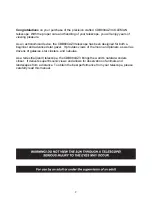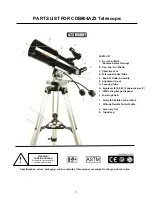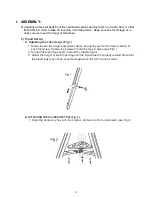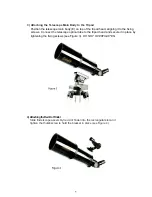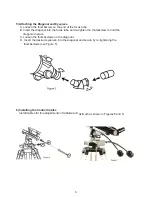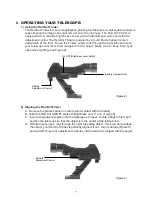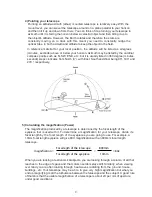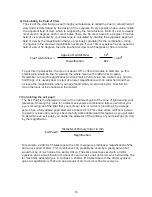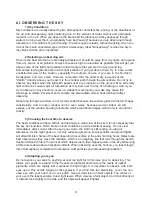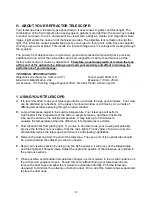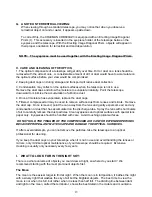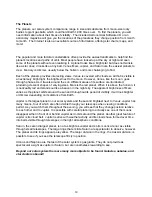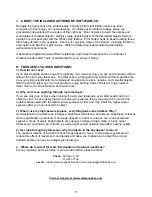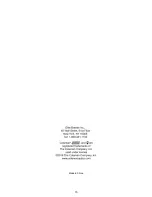
12
IV.
ABOUT YOUR REFRACTOR TELESCOPE:
Your telescope has a refractor type optical design. It uses lenses to gather and focus light. The
combination of the front objective lens and eyepiece gathers more light than the human eye is able
to collect on its own, focus it, and present the viewer with a brighter, clearer, and magnified virtual
image. Light enters the open end of the telescope tube. The objective lens refracts or bends the
light. This refraction causes parallel light rays to converge at a focal point, while those not parallel
converge upon a focal plane. This results in a focused image which is enlarged for viewing through
the eyepiece.
The primary front objective lens is a precision ground and polished component that is precisely
positioned at one end of the optical tube, and is pre-aligned for maximum performance at the
factory and should not need any adjustment.
Therefore, never tamper with or remove the lens
at this end of the optical tube. Doing so will void your warranty and affect or damage the
performance of your telescope.
TECHNICAL SPECIFICATIONS:
Objective Lens Diameter: 80mm (3.15”)
Focal Length: 800mm K
Maxumum Magnification: 40x Eyepieces: 10mm, 25mm
Accessories: 45° Erecting Image Diagonal Prism, Red Dot Finder, Astronomy CD
V.
USING YOUR TELESCOPE:
A. It is recommended to use your telescope outside or at times through open windows. Your view
can be distorted by reflections in the glass of a closed window or at times by air currents of
differing temperatures passing through an open window.
B. Let your telescope adjust to the outside temperature. Your telescope will perform
much better if the temperature of the mirrors, eyepiece lenses, and the air inside the
tube are the same as the outside temperature. It may take up to 30 minutes to
equalize the temperatures when the difference in temperatures is extreme.
C. Find a location far from glaring light. If you live in an urban area, your viewing will probably
improve the farther you move away from the city’s lights. The sky glow of a town or city can
dramatically reduce the telescope’s performance and viewing capabilities.
D. Remove the dust cap from the end of the telescope. The open end of the optical tube should
be pointed toward the subject you wish to observe.
E. Begin your viewing session by using only the K25 eyepiece. It will give you the widest angle
and the brightest, sharpest views. Adjust the angle and position of the telescope as outlined in
the previous sections.
F. When possible, avoid sudden temperature changes, as the moisture in the air will condense on
the mirrors and eyepiece lenses. Should this occur after bringing your telescope indoors,
remove the dust caps and allow the moisture to evaporate naturally. Point the telescope
downward to minimize the collection of airborne dust. Once all of the moisture has evaporated,
replace the dust caps.
Summary of Contents for CDB804AZ3
Page 16: ...16 Made in China ...


